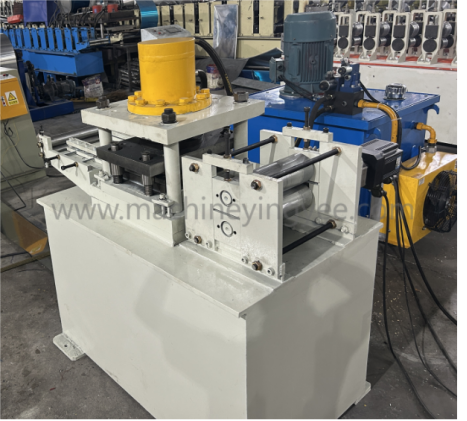
Understanding Simple Slitting Line Prices A Comprehensive Overview
In the realm of manufacturing and steel processes, slitting lines serve a crucial role in producing finished products tailored to specific customer requirements. A simple slitting line is designed to cut large rolls of metal coil into narrower strips, providing greater flexibility and efficiency in the production process. However, one of the key considerations for manufacturers and buyers alike is understanding the pricing associated with these slitting lines.
What is a Simple Slitting Line?
A simple slitting line typically consists of several key components an unwinding station, a slitting head, a tensioning system, and a recoiling station. The process begins with the unwinding of a large coil, which is fed into the slitting head where knives slice the coil into desired widths. After slitting, the strips are recoiled for further handling or processing. The simplicity of this line lies in its streamlined design, minimizing complexity while maximizing throughput.
Factors Influencing Slitting Line Prices
1. Equipment Quality and Brand Just like any machinery, the brand reputation and build quality significantly influence prices. Established manufacturers with a history of reliability will often command higher prices due to their proven track records.
2. Line Capacity The capacity of the slitting line, measured in terms of coil thickness, width, and weight it can handle, will also affect the price. Higher-capacity lines capable of processing thicker and wider coils tend to be more expensive due to the additional engineering and materials involved.
3. Technology and Automation Modern slitting lines often incorporate advanced technology and automation features, such as computerized controls and automated setup. These enhancements can increase operational efficiency and reduce human error, but they also contribute to higher upfront costs.

4. Customization Options Many manufacturers offer customizable features to accommodate specific production needs. Customizations can include additional slitting heads, different knife types, or enhanced safety features. Each of these elements can add to the overall price of the slitting line.
5. Supply and Demand Trends Market dynamics play a crucial role in pricing. High demand coupled with limited supply can drive prices up. Conversely, during times of low demand, manufacturers may reduce prices to stimulate sales.
6. Geographic Location Shipping and logistical considerations can impact slitting line prices as well. Buyers located far from manufacturing centers may incur additional transportation costs, which can be reflected in the final price of the equipment.
Cost Breakdown
When evaluating the price of a simple slitting line, it's essential to consider not just the initial purchase cost but also the total cost of ownership. This includes ongoing maintenance, operational costs, training for staff, and potential upgrade expenses. A lower initial price may seem attractive, but if the equipment requires frequent repairs or lacks efficiency, the long-term costs can outweigh the benefits.
Conclusion
In summary, understanding the pricing of simple slitting lines involves a nuanced consideration of various factors that contribute to the overall cost. From equipment quality and capacity to customization and market trends, potential buyers must conduct thorough research and warrant that their investments align with their production goals. As the demand for precision-cut materials continues to rise across industries, investing in a reliable and efficient simple slitting line can yield significant returns in productivity and profitability, making it a worthwhile consideration for manufacturers aiming to enhance their operational capabilities.